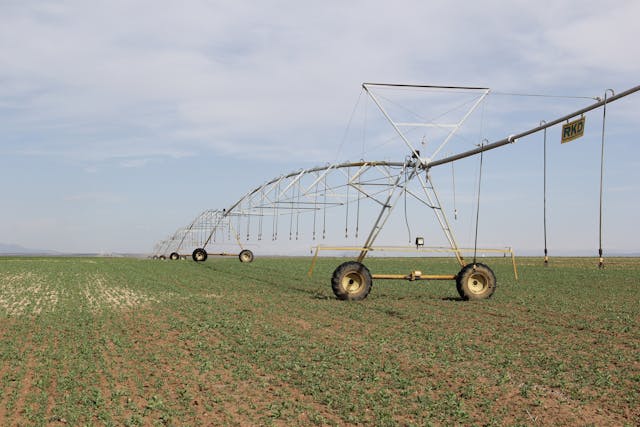- Gardening strategically supports environmental sustainability by fostering biodiverse landscapes.
- Choosing native plants provides habitat and food sources for the local wildlife.
- Water-wise practices like drip irrigation and mulching conserve water resources.
- Attracting pollinators with native flowers enhances ecosystem health and biodiversity.
- Sustainable pest management and seed-saving initiatives further contribute to environmental stewardship.
In the modern world, environmental consciousness is not just a buzzword but a necessity. As we witness the adverse effects of climate change and habitat destruction, the importance of individual action becomes increasingly evident. Gardening, a cherished pastime for many, presents a unique opportunity to contribute positively to the environment. By adopting strategic gardening practices, individuals can create vibrant and biodiverse landscapes that support local ecosystems and mitigate environmental challenges. This article will explore how gardening strategically can play a significant role in fostering environmental sustainability.
Choosing Native Plants
Native plants are the cornerstone of eco-friendly gardening practices. By selecting flora indigenous to your region, you not only ensure their suitability to local soil and climate conditions but also provide essential habitat and food sources for native wildlife. Here’s how you can incorporate native plants into your garden:
Researching Native Species
Start by researching native plant species that thrive in your area. Consider factors such as soil type, sunlight exposure, and water requirements to identify plants best suited to your garden’s environment.
Creating Habitat Niches
Design your garden layout to mimic natural habitats found in your region. Incorporate layers of vegetation, including trees, shrubs, and ground cover, to provide diverse habitats for insects, birds, and small mammals.
Implementing Water-Wise Practices
Water scarcity is a pressing global issue, making efficient water usage a priority in sustainable gardening. By adopting water-wise practices, gardeners can reduce water consumption and minimize environmental impact. Here are some strategies to consider:
Installing Drip Irrigation Systems

Drip irrigation delivers water directly to the base of plants, minimizing evaporation and runoff. Install a drip irrigation system in your garden to provide targeted watering while conserving water resources.
Mulching and Soil Amendment
Applying organic mulch to garden beds helps retain soil moisture, reducing the need for frequent watering. Additionally, amending soil with organic matter improves water retention and promotes healthy plant growth, further conserving water.
Attracting Pollinators
Pollinators play a crucial role in maintaining ecosystem health and supporting agricultural productivity. By creating pollinator-friendly habitats, gardeners can contribute to the conservation of bees, butterflies, and other essential pollinating species. Here’s how you can attract pollinators to your garden:
Planting Pollinator-Friendly Flowers

Choose flowering plants rich in nectar and pollen to attract pollinators to your garden. Include a variety of flowers with different bloom times to provide continuous food sources throughout the growing season. Consider buying bulk wildflower seeds to further improve pollination.
Providing Shelter and Nesting Sites
Incorporate features like nesting boxes, bee hotels, and rock piles into your garden to provide shelter and nesting sites for pollinators. Create diverse habitats to accommodate the specific needs of different species.
Embracing Sustainable Pest Management
Chemical pesticides not only harm beneficial insects and wildlife but also contaminate soil and water systems. Embracing sustainable pest management practices minimizes environmental damage while promoting a healthy garden ecosystem. Here’s how you can control pests sustainably:
Companion Planting
Utilize companion planting techniques to naturally repel pests and attract beneficial insects. Planting aromatic herbs like basil and marigolds alongside susceptible crops can deter pests while enhancing biodiversity in your garden.
Handpicking and Biological Controls
Monitor your garden regularly for signs of pest infestations and employ manual methods such as handpicking to remove pests. Introduce natural predators like ladybugs and lacewings to control pest populations without resorting to chemical interventions.
Supporting Biodiversity Conservation
Biodiversity is essential for ecosystem resilience and long-term environmental sustainability. By creating biodiverse garden habitats, individuals can contribute to the conservation of plant and animal species. Here’s how you can support biodiversity in your garden:
Incorporating Habitat Features
Integrate diverse habitat features such as ponds, rockeries, and log piles into your garden to attract a wide range of wildlife species. Each habitat feature provides unique resources and shelter for different organisms, enhancing overall biodiversity.
Seed Saving and Exchange
Participate in seed-saving and exchange initiatives to preserve heirloom plant varieties and promote genetic diversity. By saving seeds from your garden plants and sharing them with others, you contribute to the conservation of plant genetic resources.
Gardening is not just a hobby; it’s a powerful tool for environmental stewardship. By gardening strategically and incorporating native plants, water-wise practices, pollinator-friendly habitats, sustainable pest management techniques, and biodiversity conservation efforts, individuals can make a meaningful difference in the health of the planet. Whether you’re tending to a small backyard garden or cultivating a community green space, every action counts. So, roll up your sleeves, grab some seeds, and start gardening for a greener future.




